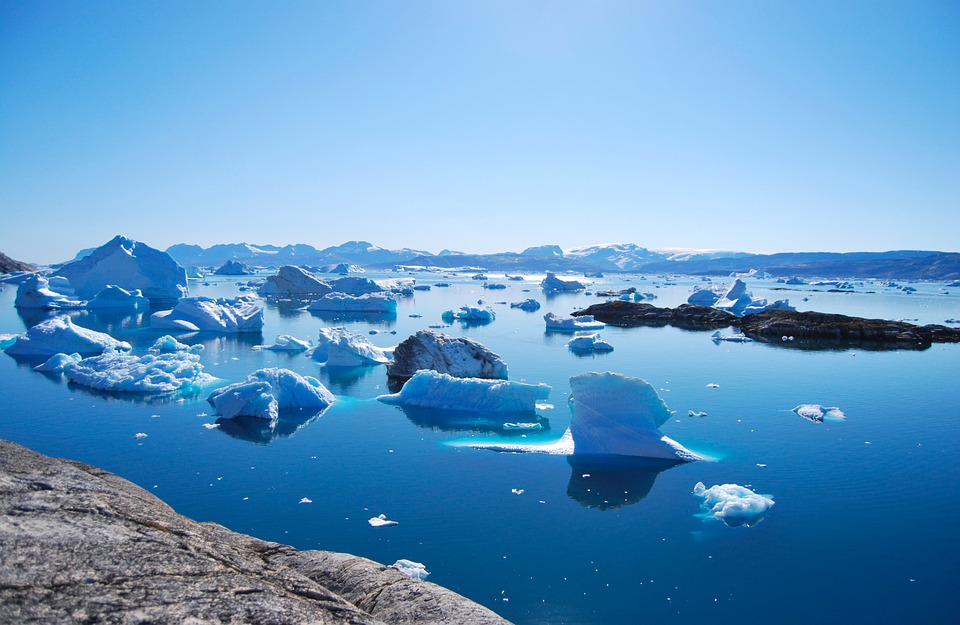Much like COVID-19, climate change is affecting the world as the temperatures rise, resulting in melting ice in the polar regions. Now, a study by NASA scientists has unveiled just what is causing the sea levels to rise.
When it comes to climate change and sea levels, there are many factors that can be attributed to the rising sea levels in the world. However, NASA researchers and other scientists have noticed an imbalance in terms of sea level budgets resulting in forecasts that do not quite match what is observed. The agency hopes to solve that problem by developing a new method that combines satellite images and refined estimates to be able to better understand the measurements that have been analyzed over time from 1900 to 2018.
Analysis of past estimates have shown that prior to the 1970s, observations have somehow overestimated the global sea levels. The NASA researchers also found that the cause for rising sea levels was in large part because of glacier meltwater that spills into the ocean. However, melting glaciers have since contributed less and less. Now, the glacier and ice sheet loss in Greenland is deemed a big factor in the sea level rise prior to 1940.
The study also found that when dams were being constructed by the 1970s, the rate of increased sea levels slowed down.
“That was one of the biggest surprises for me. We impounded so much freshwater, humanity nearly brought sea-level rise to a halt,” said Thomas Frederickse, the study’s lead researcher and postdoctorate fellow at the agency.
Although a lot of predictions for the world over the coming years have proved to be quite grim, a new study has revealed that something could still be done to combat climate change. Researchers found that by acting fast and taking some conservation measures, around half of the ice-free land that has yet to be exploited by humans could still be saved.
The researchers compared four world maps that showed land conversion from being natural land to anthropogenic land - the land that has already been exploited by humans. They found that between 48 to 56 percent of Earth’s ice-free lands have minimal human activity on them. Through leaving these natural lands intact rather than exploiting them for their natural resources, these lands could purify air and water, as well as improve soil fertility and breaking down of waste.



 CDC Vaccine Review Sparks Controversy Over Thimerosal Study Citation
CDC Vaccine Review Sparks Controversy Over Thimerosal Study Citation  Trump Signs Executive Order to Boost AI Research in Childhood Cancer
Trump Signs Executive Order to Boost AI Research in Childhood Cancer  The UK is surprisingly short of water – but more reservoirs aren’t the answer
The UK is surprisingly short of water – but more reservoirs aren’t the answer  How ongoing deforestation is rooted in colonialism and its management practices
How ongoing deforestation is rooted in colonialism and its management practices  FDA Lifts REMS Requirement for CAR-T Cell Cancer Therapies
FDA Lifts REMS Requirement for CAR-T Cell Cancer Therapies  How is Antarctica melting, exactly? Crucial details are beginning to come into focus
How is Antarctica melting, exactly? Crucial details are beginning to come into focus  Ukraine minerals deal: the idea that natural resource extraction can build peace has been around for decades
Ukraine minerals deal: the idea that natural resource extraction can build peace has been around for decades  SpaceX Starship Explodes in Texas During Test, Citing Nitrogen Tank Failure
SpaceX Starship Explodes in Texas During Test, Citing Nitrogen Tank Failure  Tabletop particle accelerator could transform medicine and materials science
Tabletop particle accelerator could transform medicine and materials science  Rise of the Zombie Bugs takes readers on a jaw-dropping tour of the parasite world
Rise of the Zombie Bugs takes readers on a jaw-dropping tour of the parasite world  Lake beds are rich environmental records — studying them reveals much about a place’s history
Lake beds are rich environmental records — studying them reveals much about a place’s history  NASA Resumes Cygnus XL Cargo Docking with Space Station After Software Fix
NASA Resumes Cygnus XL Cargo Docking with Space Station After Software Fix  What’s so special about Ukraine’s minerals? A geologist explains
What’s so special about Ukraine’s minerals? A geologist explains  Lab-grown meat: you may find it icky, but it could drive forward medical research
Lab-grown meat: you may find it icky, but it could drive forward medical research  Kennedy Sets September Deadline to Uncover Autism Causes Amid Controversy
Kennedy Sets September Deadline to Uncover Autism Causes Amid Controversy  Is space worth the cost? Accounting experts say its value can’t be found in spreadsheets
Is space worth the cost? Accounting experts say its value can’t be found in spreadsheets 































